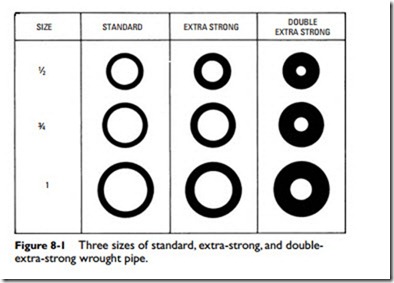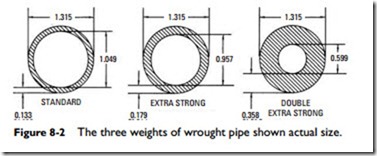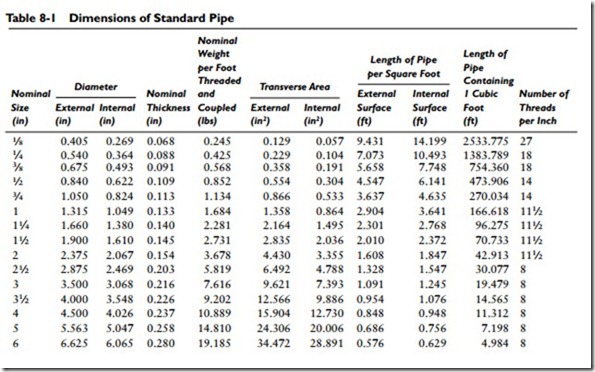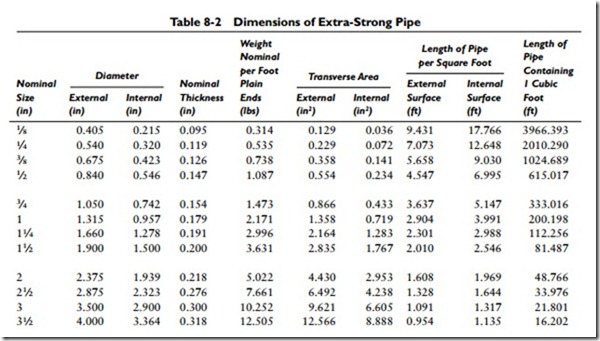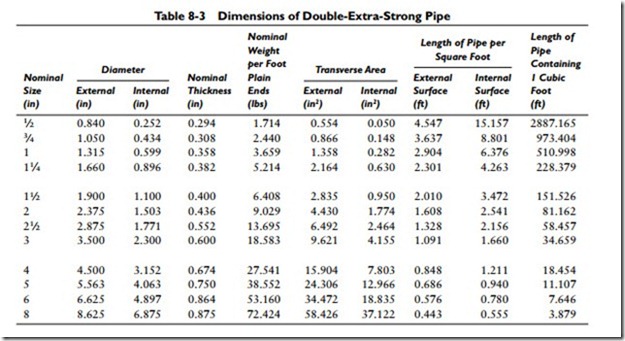Wrought-Iron Pipe
Wrought-iron pipe enjoyed widespread use in steam heating systems prior to World War II and was still being used, although on a much smaller scale, until 1968 when its production was discontinued in the United States.
Wrought-iron pipe has been shown to have an extremely long service life. Piping systems installed 50 to 80 years ago are still operating without any signs of deterioration. This is due not only to the internal grain structure of wrought-iron pipe, but also to its high resistance to corrosion.
Note
Some ferrous metals, such as black iron (ordinary steel), are subject to corrosion if oxygen is allowed to enter the pipes. Certain types of cast-iron pipe fittings, as well as some valves and fittings, are also subject to corrosion if oxygen is present.The corrosion is irreversible.
Wrought-iron pipe differs very little in appearance from wrought- steel pipe. Indeed, were it not for special markings, the casual observer would not be able to distinguish between the two. Some wrought-iron pipe is stamped genuine wrought iron”on each length. More frequently, the distinguishing mark is a spiral line marked into each length of pipe. The spiral identification line may be painted onto the surface in some bright color (usually red) or knurled into the metal.
The pipe used in heating installations is manufactured for differ- ent pressures and is available in various rated sizes (also referred to as the nominal inside diameter). The three grades of wrought-iron pipe are as follows:
• Standard
• Extra strong (or heavy)
• Double extra strong (or very heavy)
The pipe sections shown in Figure 8-1 are approximately half their actual size. Figure 8-2 illustrates their actual sizes, showing proportions of the three grades of wrought pipes.
The diameters given for pipes are far from the actual diameters, especially in the small sizes. Thus, a pipe known as 1⁄4 inch (rated size) has an outside diameter of 0.54 inch and an inside diameter of
inch. Dimensions for standard, extra-strong, and double- extra-strong pipe are given in Tables 8-1, 8-2, and 8-3.
Wrought-iron pipes are adapted to higher pressures by making the walls thicker, but without changing the outside diameters. It is the inside diameter that is reduced.
Related posts:
Incoming search terms:
- wrought iron pipes
- wrpught iron pipes
- sizes of pipes
- Non Corrosive Fittings mail
- Iron Pipes mail
- wrought iron plumbing system
- dimension of black pipe
- wrought iron pipe sizes
- wrought iron fittings
- what are wrought iron pipea
- heavy thickness pipe fittings mail
- rout iron pipe
- iron pipe coupling dimensions
- 6 in diameter wrought iron pipe
